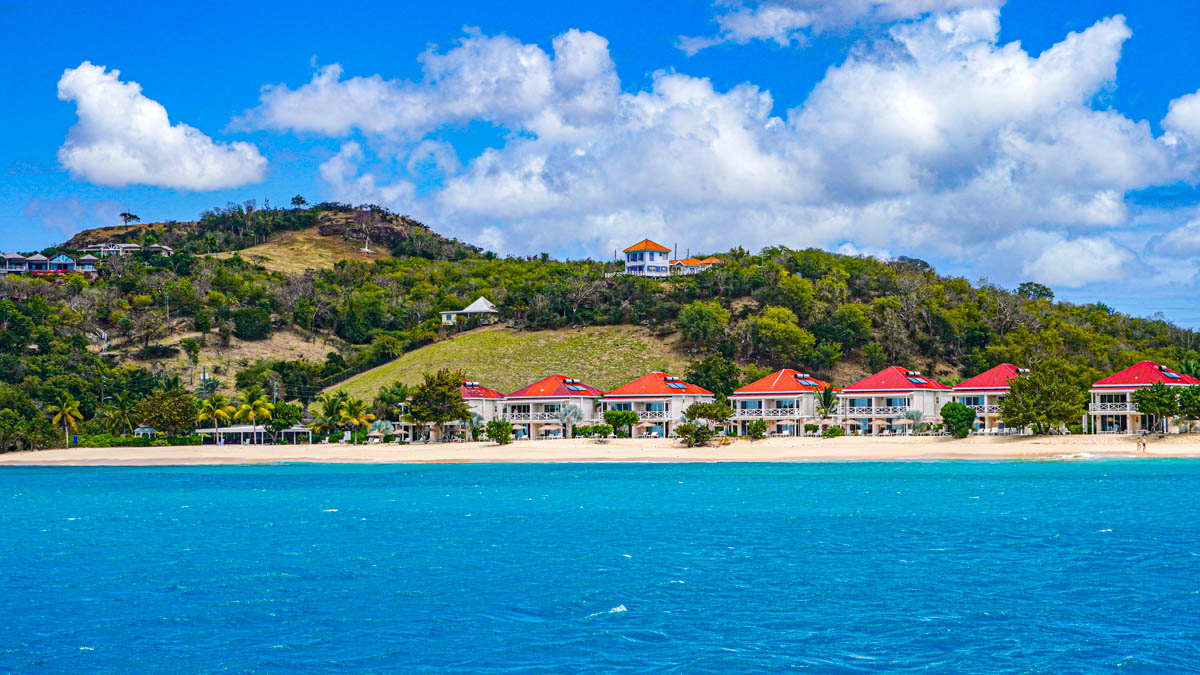St. John Island, also known as Saint John, is a popular tourist destination located in the Caribbean Sea. It is part of the United States Virgin Islands (USVI) and is the smallest of the three main islands in the territory, along with St. Thomas and St. Croix. Here’s some information about St. John Island:
- Location: St. John Island is situated in the northeastern Caribbean Sea, about 4 miles east of St. Thomas and 4 miles southwest of Tortola (British Virgin Islands). It covers an area of approximately 20 square miles.
- Natural Beauty: St. John Island is known for its stunning natural beauty, including pristine white-sand beaches, crystal-clear turquoise waters, and lush tropical forests. Over 60% of the island is protected as part of the Virgin Islands National Park, which offers opportunities for hiking, snorkeling, and exploring various ecological sites.
- Trunk Bay: Trunk Bay is one of the most famous beaches on St. John Island, renowned for its picturesque setting and underwater snorkeling trail. It features a 225-yard long beach with powdery sand and offers excellent snorkeling opportunities to explore a vibrant coral reef ecosystem.
- Virgin Islands National Park: The Virgin Islands National Park covers a significant portion of St. John Island, encompassing both land and marine areas. It was established in 1956 and offers a diverse range of ecosystems, including forests, mangroves, beaches, and coral reefs. The park is home to various wildlife species, including sea turtles, tropical birds, and marine life.
- Cruz Bay: Cruz Bay is the main town and the primary entry point for visitors arriving on St. John Island. It offers a range of amenities, including shops, restaurants, bars, and accommodations. The town’s harbor serves as a docking point for ferries coming from St. Thomas and other neighboring islands.
- Water Sports and Recreation: St. John Island provides ample opportunities for water sports and outdoor activities. Popular activities include snorkeling, scuba diving, sailing, kayaking, paddleboarding, and fishing. The island’s calm and clear waters make it an ideal destination for both beginners and experienced water enthusiasts.
- Annaberg Plantation: The Annaberg Plantation is a historic site located within the Virgin Islands National Park. It was once a thriving sugar plantation during the colonial era and offers visitors a glimpse into the island’s history and the life of the plantation workers. The ruins of the plantation, including a windmill and other structures, can be explored.
- Coral Bay: Located on the eastern side of St. John Island, Coral Bay is a smaller community known for its laid-back atmosphere and scenic views. It offers a more tranquil alternative to the busier Cruz Bay, with a selection of restaurants, shops, and accommodations.
- Eco-Tourism and Conservation: St. John Island is committed to eco-tourism and conservation efforts. The island’s government and organizations work to protect its natural resources, preserve the marine ecosystems, and promote sustainable tourism practices.
- Getting There: Visitors can reach St. John Island by flying into Cyril E. King Airport on St. Thomas and then taking a ferry from Red Hook or Charlotte Amalie. There are also seaplane services available from St. Thomas to St. John.
St. John Island offers a unique combination of natural beauty, outdoor activities, and a relaxed Caribbean atmosphere, making it a popular destination for beach lovers, nature enthusiasts, and those seeking a tropical getaway.
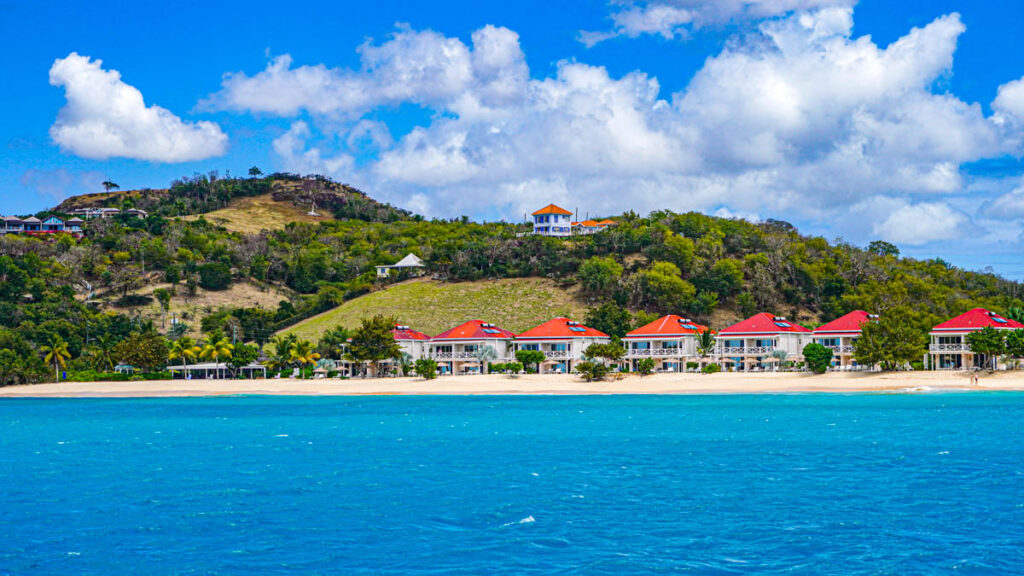
What is Saint John Island known for?
Saint John Island is known for several notable features and attractions, making it a renowned destination in the Caribbean:
- Pristine Beaches: The island is famous for its pristine white-sand beaches and crystal-clear turquoise waters. Trunk Bay, Cinnamon Bay, Maho Bay, and Hawksnest Beach are just a few examples of the stunning beaches that draw visitors from around the world.
- Virgin Islands National Park: Covering over 60% of the island, the Virgin Islands National Park is a significant attraction. It offers visitors a chance to experience diverse ecosystems, from lush tropical forests and mangroves to coral reefs and underwater wonders.
- Snorkeling and Diving: St. John Island is a paradise for snorkelers and divers, with a rich marine life and vibrant coral reefs. The underwater snorkeling trail at Trunk Bay is particularly famous for its accessibility and beauty.
- Eco-Tourism and Conservation: The island is dedicated to eco-tourism and conservation efforts. The Virgin Islands National Park and surrounding waters are protected to preserve the island’s natural beauty and biodiversity.
- Annaberg Plantation: As a historic site within the Virgin Islands National Park, the Annaberg Plantation offers insights into the island’s colonial history and the sugar plantation era.
- Hiking and Nature Trails: St. John Island provides excellent hiking opportunities with numerous nature trails offering scenic views, waterfalls, and encounters with the local wildlife.
- Cruz Bay: The main town of St. John Island, Cruz Bay, is known for its charming atmosphere, waterfront restaurants, and boutique shops. It serves as the primary gateway for visitors arriving by ferry.
- Coral Bay: On the eastern side of the island, Coral Bay offers a more laid-back atmosphere and stunning views, attracting travelers seeking a quieter experience.
- Water Sports and Recreation: Visitors can enjoy a wide range of water sports, such as kayaking, paddleboarding, sailing, and fishing, in the island’s calm and clear waters.
- Relaxation and Tropical Getaway: Saint John Island is renowned as a tropical paradise, offering a perfect setting for relaxation and escape from the hustle and bustle of everyday life.
Overall, Saint John Island’s blend of natural beauty, outdoor activities, historical sites, and commitment to preservation and sustainability make it a popular and cherished destination for travelers seeking a genuine Caribbean experience.

Should I Stay on St. Thomas or St. John?
Deciding whether to stay on St. Thomas or St. John depends on your preferences, interests, and the type of vacation experience you seek. Both islands have their unique characteristics, so let’s explore some factors to consider:
Stay on St. Thomas if:
- Convenience: St. Thomas has a larger population and more developed infrastructure, including an international airport (Cyril E. King Airport). If you prefer easy access to amenities, shopping, and a broader range of accommodation options, St. Thomas might be a better choice.
- Variety of Activities: St. Thomas offers a wider range of activities and attractions, including historical sites, duty-free shopping, a bustling nightlife, and popular attractions like the famous Magens Bay Beach.
- Island Hopping: St. Thomas serves as a major transportation hub in the US Virgin Islands, making it more convenient for island hopping to nearby destinations like St. John, St. Croix, and the British Virgin Islands.
- Cruise Ships: St. Thomas is a popular port of call for cruise ships, so if you’re arriving by cruise, staying on the island can provide easy access to various excursions and activities.
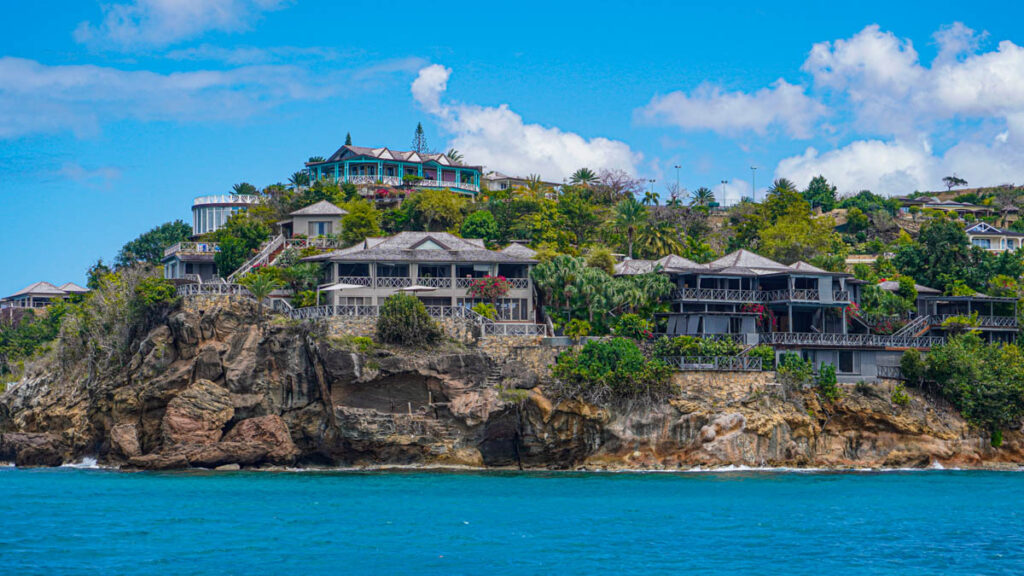
Stay on St. John if:
- Natural Beauty and Tranquility: St. John is known for its unspoiled natural beauty, including pristine beaches, lush forests, and protected national parklands. If you prefer a quieter and more relaxed atmosphere, St. John offers a tranquil escape from the busier world.
- Outdoor Activities: If you enjoy outdoor activities like hiking, snorkeling, and exploring nature, St. John’s Virgin Islands National Park provides ample opportunities to connect with nature.
- Seclusion: St. John has a smaller population and less developed infrastructure compared to St. Thomas, making it an ideal choice for a secluded and peaceful vacation.
- Eco-Tourism and Conservation: St. John takes its commitment to eco-tourism and conservation seriously, making it a great destination for travelers interested in supporting sustainable practices and preserving the environment.
- Access to St. Thomas: While St. John offers a quieter experience, it’s still relatively easy to visit St. Thomas for a day trip or to catch a flight back home if needed.
Ultimately, both islands offer incredible experiences, so you can’t go wrong with either choice. If you’re seeking a mix of vibrant activities, shopping, and a more bustling atmosphere, St. Thomas might be the better fit. On the other hand, if you crave serenity, pristine nature, and a laid-back vibe, St. John is likely the perfect destination for you.

Why you need to visit St. John.
St. John is a captivating destination that offers a plethora of reasons why you should consider visiting. Here are some compelling reasons to visit St. John:
- Unspoiled Natural Beauty: St. John is renowned for its pristine beaches, turquoise waters, and lush tropical landscapes. With over 60% of the island protected as part of the Virgin Islands National Park, you can immerse yourself in untouched natural beauty.
- Virgin Islands National Park: The Virgin Islands National Park is a unique treasure that encompasses diverse ecosystems, from lush forests to vibrant coral reefs. It provides ample opportunities for hiking, snorkeling, and wildlife spotting.
- Tranquility and Serenity: If you’re seeking a peaceful escape from the hustle and bustle of everyday life, St. John offers a tranquil and laid-back atmosphere. It’s the perfect place to unwind and rejuvenate.
- World-Class Beaches: St. John boasts some of the most stunning beaches in the Caribbean, including Trunk Bay, Cinnamon Bay, Maho Bay, and Hawksnest Beach. Whether you want to relax on the sand or snorkel in clear waters, there’s a beach for you.
- Water Activities: The island provides excellent opportunities for snorkeling, scuba diving, kayaking, paddleboarding, and sailing. Explore the underwater world teeming with marine life and colorful coral reefs.
- Eco-Tourism and Conservation: St. John is committed to eco-tourism and conservation efforts, making it an excellent destination for travelers who care about preserving the environment and supporting sustainable tourism.
- Historical Sites: Explore the remnants of St. John’s colonial past, including the Annaberg Plantation, which offers insights into the island’s history and the sugar plantation era.
- Cruz Bay: The charming town of Cruz Bay serves as the main gateway to St. John. Enjoy waterfront restaurants, boutique shops, and a vibrant atmosphere.
- Sunsets and Stargazing: St. John’s unspoiled environment allows for breathtaking sunsets and excellent stargazing opportunities. Witness the beauty of the night sky away from city lights.
- Island Hopping: While on St. John, you can easily explore nearby islands, such as St. Thomas and the British Virgin Islands, offering a chance to experience a variety of Caribbean cultures and landscapes.
- Supporting Local Communities: Visiting St. John contributes to the local economy and helps sustain the island’s unique way of life.
Whether you’re a nature enthusiast, a beach lover, or simply seeking a serene tropical getaway, St. John has something to offer. It’s an ideal destination for those who appreciate the beauty of nature and want to experience a more authentic and off-the-beaten-path Caribbean experience.
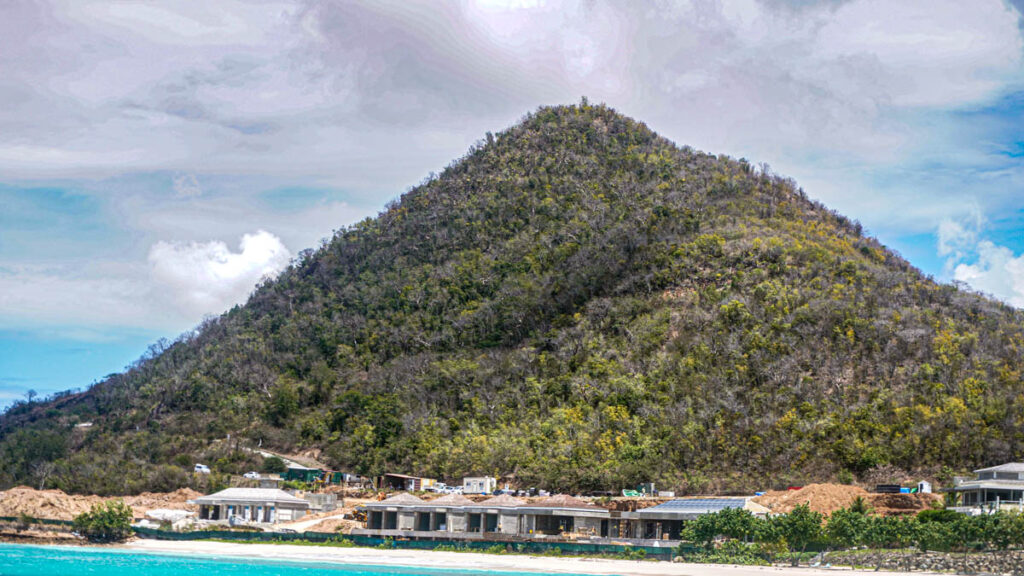
What do I need to know before going to St John?
Before visiting St. John, it’s essential to be well-prepared to ensure a smooth and enjoyable trip. Here are some important things to know before going to St. John:
- Entry Requirements: If you’re traveling internationally to St. John, make sure to check the visa requirements and any necessary travel documents for your nationality. Also, have a valid passport with sufficient validity.
- Currency: The official currency in the US Virgin Islands, including St. John, is the United States Dollar (USD). Credit cards are widely accepted, but it’s always a good idea to carry some cash for smaller vendors and tips.
- Health and Safety: St. John is generally a safe destination, but it’s essential to exercise standard travel precautions. Be mindful of your belongings, avoid isolated areas at night, and be aware of your surroundings.
- Travel Insurance: Consider purchasing comprehensive travel insurance that covers medical emergencies, trip cancellations, and lost or stolen belongings.
- Climate and Weather: St. John has a tropical climate with warm temperatures year-round. Be prepared for occasional rain showers and pack appropriate clothing, including lightweight and breathable fabrics.
- Hurricane Season: The Atlantic hurricane season runs from June to November. While the likelihood of a direct hit is relatively low, it’s important to monitor weather updates and have a flexible travel plan during this period.
- Transportation: Renting a car is an excellent way to explore St. John independently. Keep in mind that driving is on the left side of the road. Taxis and safari buses are also available for transportation around the island.
- Ferry Services: If you’re arriving from St. Thomas, there are regular ferry services between Charlotte Amalie (St. Thomas) and Cruz Bay (St. John). Check the ferry schedule and plan accordingly, as services may vary.
- National Park Regulations: St. John’s Virgin Islands National Park has specific regulations to preserve the environment and wildlife. Follow park rules, do not disturb wildlife, and refrain from picking or damaging coral.
- Mosquito Protection: Like many tropical destinations, St. John can have mosquitos. Pack insect repellent and light long-sleeved clothing to protect yourself from mosquito bites.
- Water Safety: The tap water in the US Virgin Islands is generally safe to drink, but many people prefer bottled water. If you plan to swim or snorkel, follow safety guidelines and be cautious of currents and underwater conditions.
- Local Customs: Respect the local customs and traditions of St. John. Greeting locals with a friendly “Good morning” or “Good afternoon” is a common practice.
- Cellular Coverage: Check with your mobile provider about international roaming options and coverage on the island. Wi-Fi is available in many accommodations and restaurants.
Remember to plan ahead, make reservations for accommodations and activities, and have a general itinerary to make the most of your time on St. John. Researching and being well-prepared will help ensure a memorable and enjoyable trip to this beautiful Caribbean destination.

What is the famous beaches in St John?
St. John is home to several famous and breathtaking beaches, known for their pristine beauty and crystal-clear waters. Here are some of the most renowned beaches on the island:
- Trunk Bay: Arguably the most famous beach on St. John, Trunk Bay is renowned for its picture-perfect setting and underwater snorkeling trail. The beach features soft, white sand and a backdrop of lush greenery, making it a postcard-worthy destination.
- Cinnamon Bay: Cinnamon Bay is another popular and stunning beach on the island. It offers a long stretch of golden sand, excellent swimming conditions, and various water activities. The nearby Cinnamon Bay Ruins add historical interest to the area.
- Maho Bay: Maho Bay is a favorite among families and nature lovers due to its shallow and calm waters. It’s a great spot for spotting sea turtles and enjoying a relaxing beach day.
- Hawksnest Bay: Hawksnest Bay is easily accessible and features a lovely sandy beach surrounded by tropical foliage. It’s a fantastic place for swimming, sunbathing, and picnicking.
- Caneel Bay: This beach is part of the Caneel Bay Resort, but it is open to the public. With its beautiful views and gentle waves, it’s a peaceful spot to unwind.
- Francis Bay: Located on the island’s north shore, Francis Bay offers a more secluded and peaceful experience. The beach is less crowded, making it an ideal choice for those seeking tranquility.
- Salt Pond Bay: While a bit more off the beaten path, Salt Pond Bay rewards visitors with its beautiful white sand and fascinating salt pond nearby. The beach offers good snorkeling opportunities and a chance to explore tidal pools.
- Honeymoon Beach: Accessible via a short hike or by water taxi, Honeymoon Beach is a picturesque and romantic spot on the island. The calm waters and soft sands make it a delightful escape.
Each of these beaches has its charm and allure, and you may want to visit several to experience the diverse beauty that St. John offers. Remember to respect the environment and follow any park regulations while enjoying the stunning beaches of this Caribbean paradise.
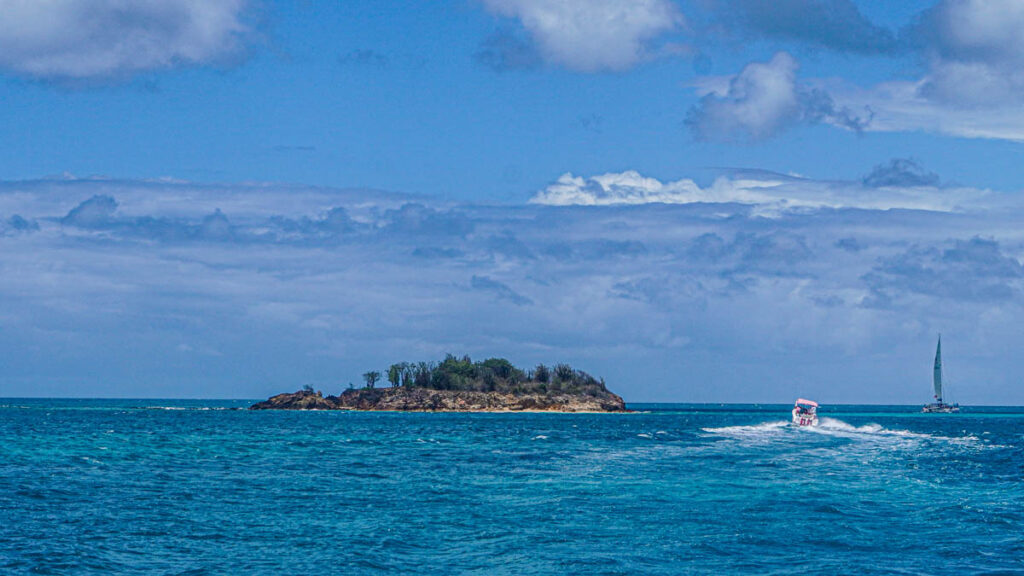
What is the best time to go to St. John?
The best time to visit St. John largely depends on your preferences for weather, crowds, and activities. St. John enjoys a tropical climate, making it a pleasant destination year-round. Here are some considerations for different seasons:
- High Season (December to April):
- This is the most popular time to visit St. John, especially during the winter months when travelers seek to escape colder climates.
- The weather is generally dry and comfortable, with temperatures ranging from the mid-70s to mid-80s Fahrenheit (24-29°C).
- Expect higher accommodation rates and increased tourist crowds during this period.
- Shoulder Seasons (May to June, November):
- The shoulder seasons offer a good balance between pleasant weather and fewer crowds.
- May to June sees slightly warmer temperatures, but it’s still enjoyable for beach activities and water sports.
- November is less crowded than the peak winter months, and you might find some discounted rates before the busy holiday season.
- Low Season (July to October):
- The low season coincides with the Atlantic hurricane season, which runs from June to November.
- July to October is hotter and more humid, with occasional rainfall and the potential for hurricanes or tropical storms.
- On the positive side, you may find some excellent travel deals and less crowded beaches during this time.
If you want to avoid crowds and take advantage of lower rates, consider visiting during the shoulder or low seasons. However, keep in mind the possibility of tropical storms during the hurricane season and be prepared for occasional rain showers.
If you prefer more stable weather and a vibrant atmosphere, the high season is the best option. Just be sure to book accommodations well in advance, as popular places can fill up quickly during peak times.
Ultimately, the best time to visit St. John depends on your personal preferences and priorities. Regardless of the season you choose, St. John’s natural beauty and relaxed Caribbean vibe will offer an unforgettable experience.

